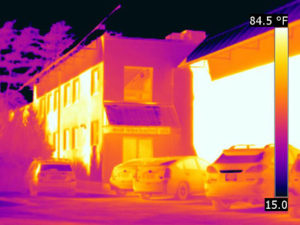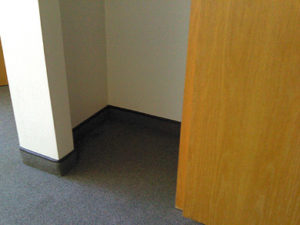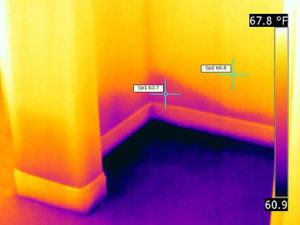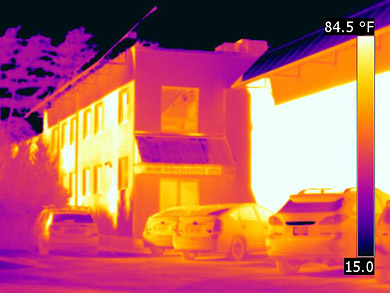Often the most beneficial and cost-effective energy efficiency improvements for a structure involve sealing the building envelope. Heating and cooling costs rise dramatically when conditioned air is lost to the exterior as a result of unsealed openings and missing, insufficient, or damaged insulation.
and cost-effective energy efficiency improvements for a structure involve sealing the building envelope. Heating and cooling costs rise dramatically when conditioned air is lost to the exterior as a result of unsealed openings and missing, insufficient, or damaged insulation.
But how do you locate these problem areas? And how can they be found with minimal disruption? Enter infrared thermography.
By highlighting temperature differentials, infrared thermography can help pinpoint locations where conditioned air is leaking from the building (exfiltration) and unconditioned air is entering (infiltration).
Infrared thermography works by detecting the infrared energy that all objects emit. As the temperature of an object rises, the amount of emitted infrared energy also increases. Infrared cameras utilize this principle to determine temperatures and display them as color images.
Thermographic images are an excellent, non-destructive tool for locating areas of air leakage and heat loss in buildings, but that’s just one of many problems they can help uncover. They’re also effective at locating the source of leaks, highlighting the extent of water damage, tracing radiant heating wires or pipes, identifying areas of potential mold growth, detecting electrical faults, and verifying the quality of insulation installation.

The below images illustrate how infrared thermography can reveal water damage that isn’t visible to the naked eye. The damp areas are slightly cooler and thus appear darker in the infrared image.
Although the infrared images on their own can be very informative, properly interpreting them requires an understanding of infrared principles and the parameters of the camera. A variety of factors can impact the infrared images including sun, reflections, camera angle, time of day, wind, thermal conductivity, and the emissivity of materials. Without a thorough knowledge of how these variable impact the images, incomplete or incorrect interpretations are possible.
 Chapman offers certified thermographers and infrared equipment as part of our Building Performance services. If you have envelope or moisture issues in your facility, feel free to contact us for help in diagnosing the source and extent of the problem as well as the most appropriate solution.
Chapman offers certified thermographers and infrared equipment as part of our Building Performance services. If you have envelope or moisture issues in your facility, feel free to contact us for help in diagnosing the source and extent of the problem as well as the most appropriate solution.
To learn more about the numerous building applications of infrared thermography, as well as the science behind the cameras, stop by Chapman’s office on November 18th for a free, informative presentation by Matthew Knights from Flir Systems.
published on 11.09.2010


